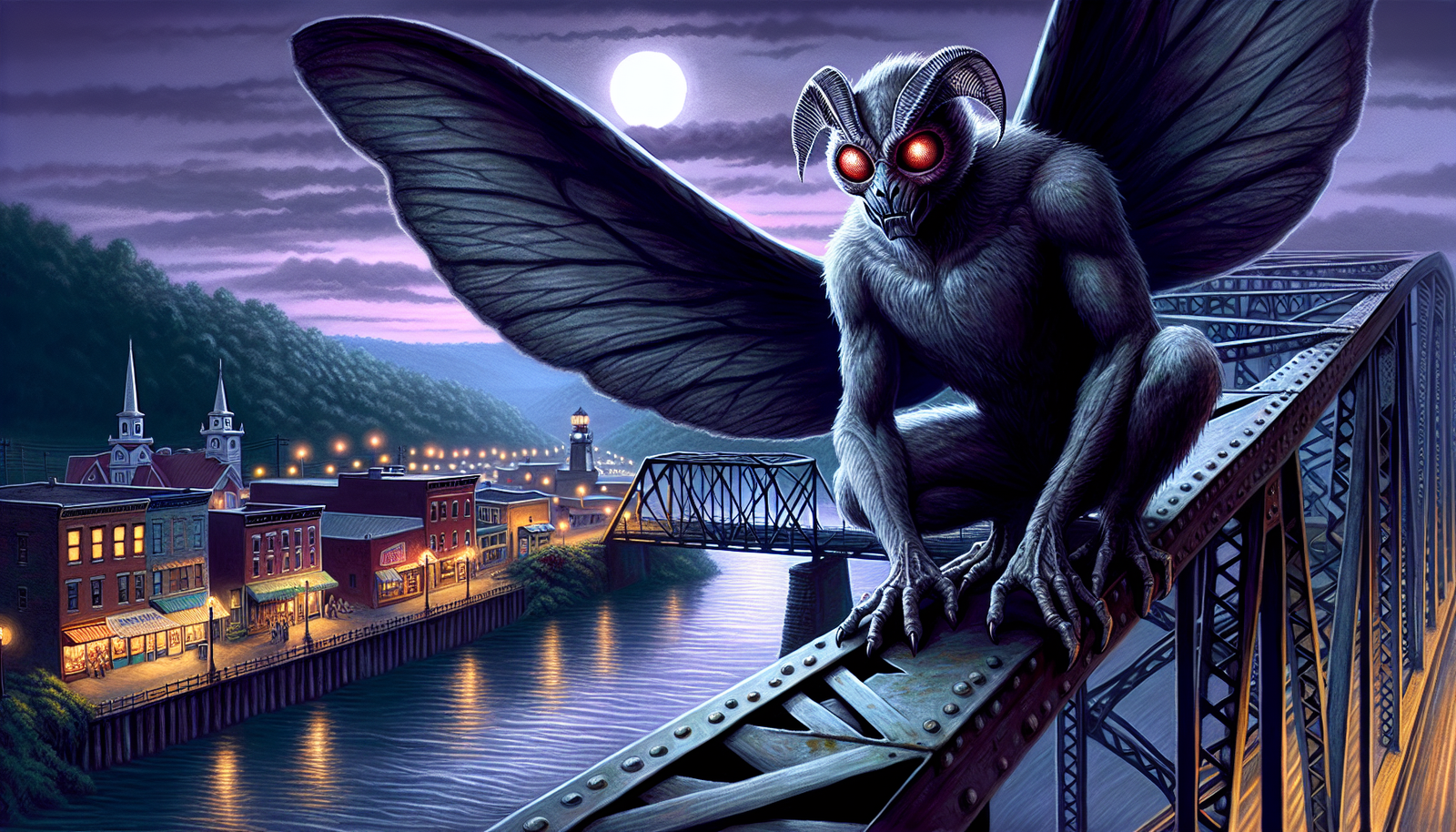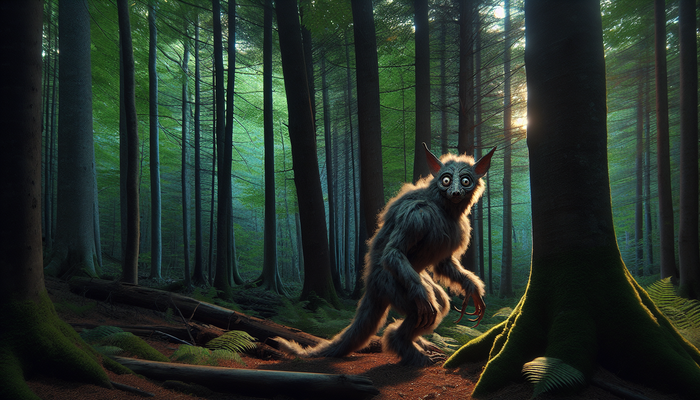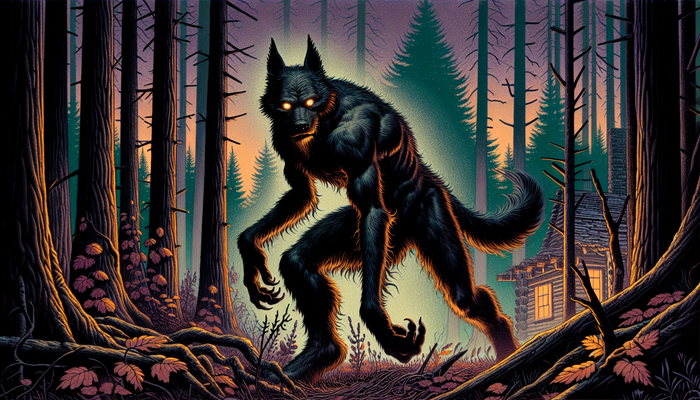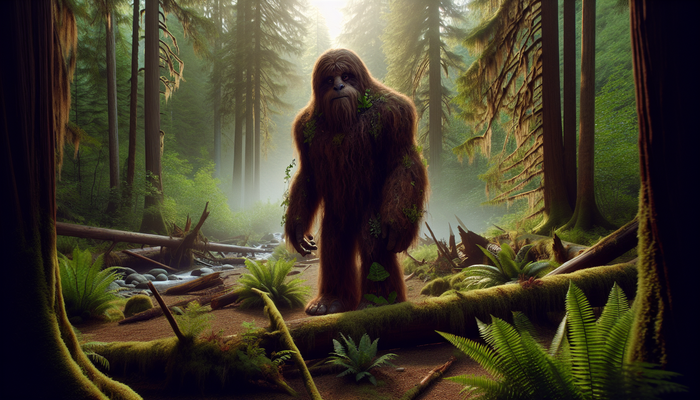West Virginia Cryptids: From Mothman to Sheepsquatch

By Lucas Jennings, Cryptozoologist
In the heart of Appalachia lies a state that has long been a breeding ground for tales of the strange and unexplained. West Virginia, with its rugged mountains, misty hollows, and dense forests, has captured the imagination of generations with its rich tapestry of folklore and legends. Among these tales, none are more captivating than those of the state's cryptids - mythical creatures that have both terrified and enthralled the local population for decades.
As an adventurous naturalist and cryptozoologist, I have long been fascinated by these elusive beings. My quest to unravel the mysteries surrounding West Virginia's cryptids has led me deep into the heart of the Mountain State, where I have interviewed eyewitnesses, pored over historical records, and even conducted my own investigations into the most famous of these creatures.
In this article, I invite you to join me on a journey through the wild, wonderful, and weird world of West Virginia's legendary cryptids. From the enigmatic Mothman to the fearsome Sheepsquatch, we will explore the origins, sightings, and cultural impact of these creatures, separating fact from fiction and shedding light on the enduring allure of the unknown.
The Mothman: Point Pleasant's Enigmatic Winged Humanoid
Our journey begins with perhaps the most famous of all West Virginia cryptids: the Mothman. This mysterious creature first burst onto the scene in the small town of Point Pleasant in 1966, when a series of bizarre sightings captured the attention of the local community and, eventually, the nation.
The first reported encounter occurred on November 12, 1966, when five men digging a grave in a cemetery near Clendenin claimed to have seen a man-like figure soaring effortlessly over their heads. Just three days later, on November 15, two young couples driving near an abandoned World War II munitions plant in Point Pleasant reported a chilling encounter with a large, winged humanoid. They described the creature as having glowing red eyes and a wingspan of up to 10 feet, and claimed that it pursued their car as they fled the scene in terror.
In the months that followed, dozens more sightings were reported in and around Point Pleasant. Eyewitnesses described a creature that stood between six and seven feet tall, with a muscular build, gray or brown skin, and those haunting, glowing red eyes. Some even claimed that the Mothman emitted a high-pitched, eerie sound, adding to its otherworldly aura.
As the sightings continued, speculation ran rampant about the true nature of the Mothman. Some believed it to be a previously unknown species of large bird, while others suggested it might be an extraterrestrial being or a top-secret government experiment gone awry. However, the most chilling theory emerged in the wake of a tragic event that rocked the Point Pleasant community to its core.
On December 15, 1967, the Silver Bridge, which connected Point Pleasant to Gallipolis, Ohio, collapsed during rush hour traffic, sending 46 people plummeting to their deaths in the icy waters of the Ohio River. In the aftermath of this disaster, some began to speculate that the Mothman sightings and the bridge collapse were somehow connected. Had the creature been a harbinger of doom, appearing to warn of the impending tragedy? Or was it, as some suggested, a malevolent force that had somehow caused the catastrophe?
These questions have lingered for decades, adding to the Mothman's enduring mystique. Today, the creature remains an integral part of Point Pleasant's cultural identity, celebrated through a dedicated museum, an annual festival, and even a striking stainless steel statue that stands watch over the town. For many, the Mothman represents the enduring power of folklore and the human fascination with the unknown, serving as a reminder that there are still mysteries in this world that defy explanation.
The Flatwoods Monster: Braxton County's Extraterrestrial Encounter
As we delve deeper into the annals of West Virginia's cryptid lore, we come to the Flatwoods Monster, a creature whose origins are inextricably linked to the UFO phenomenon that swept the nation in the mid-20th century.
The story of the Flatwoods Monster begins on a clear, crisp evening in September 1952, when a group of children playing in the small town of Flatwoods, Braxton County, witnessed a bright object streaking across the sky. The object appeared to crash land on a nearby farm, prompting the children to alert their parents and other locals.
A group of around seven people, including the children, their mother, and a National Guardsman, set out to investigate the crash site. As they neared the top of a hill, they were met with a sight that would haunt them for the rest of their lives. There, in a clearing, stood a towering creature, estimated to be around 10 feet tall, with a glowing red face and a green body that appeared to be either made of metal or clad in some form of armor. The creature's head was encased in a pointed, hood-like shape, and it emitted a shrill, hissing sound that filled the witnesses with terror.
As the group fled in panic, they noticed a strange, pungent mist that seemed to emanate from the creature or the crash site. Some later reported feeling nauseous or experiencing irritation to their nose and throat, leading to speculation that the mist may have been some form of chemical agent or fuel from the crashed object.
News of the encounter spread like wildfire, and soon, the Flatwoods Monster became a national sensation. Journalists, UFO investigators, and even the U.S. Air Force descended upon the small town, eager to unravel the mystery. The incident became a key part of Project Blue Book, the Air Force's official investigation into UFO sightings, though the military ultimately concluded that the witnesses had likely seen a meteor and an owl, dismissing the creature sighting as a case of misidentification and mass hysteria.
Despite the official explanation, the legend of the Flatwoods Monster endured. Over the years, researchers and enthusiasts have put forth various theories about the creature's true nature. Some believe it may have been an extraterrestrial being, perhaps the occupant of a crashed spacecraft. Others speculate that it could have been an experimental aircraft or even a secret government project gone awry.
Regardless of its origins, the Flatwoods Monster has left an indelible mark on the town that bears its name. Today, Flatwoods embraces its unique place in cryptid history, hosting an annual festival and maintaining a museum dedicated to the creature. Visitors can explore exhibits featuring eyewitness accounts, newspaper clippings, and even a detailed model of the monster itself.
For cryptozoologists and UFO enthusiasts alike, the Flatwoods Monster remains a tantalizing enigma - a case that blurs the lines between the paranormal and the extraterrestrial, inviting us to question our assumptions about the nature of reality and our place in the universe.
The Grafton Monster: Headless Beast of Taylor County
Moving northward from Braxton County, we come to the town of Grafton, nestled in the heart of Taylor County. It was here, in the summer of 1964, that a new cryptid emerged from the shadows to terrorize the local population - the Grafton Monster.
The first reported sighting of this bizarre creature came from journalist Robert Cockrell, who claimed to have encountered the monster while driving along the Tygart River late one night. According to Cockrell, the creature was a large, white, humanoid figure, standing around seven to nine feet tall. Most disturbingly, it appeared to be headless, with smooth, seal-like skin covering its body.
Cockrell's account quickly spread through the town, sparking a wave of monster hunting fervor among the locals. Armed with guns and flashlights, groups of men scoured the woods and riverbanks, determined to track down and kill the beast. Over the next several days, more than 20 sightings were reported, each adding to the growing panic and confusion.
Despite the numerous eyewitness accounts, no concrete evidence of the Grafton Monster's existence ever emerged. Investigators found no footprints, no hair samples, and no other physical traces of the creature's presence. As the days turned into weeks, the sightings gradually tapered off, and life in Grafton slowly returned to normal.
In the decades since, the Grafton Monster has remained a subject of fascination for cryptozoologists and folklore enthusiasts. Some have speculated that the creature may have been a misidentified bear or even a wandering Bigfoot-type creature. Others have suggested more outlandish explanations, such as an extraterrestrial visitor or a top-secret government experiment.
One of the most intriguing aspects of the Grafton Monster case is the apparent lack of any historical or cultural precedent for such a creature in the region. Unlike the Mothman or the Flatwoods Monster, which have roots in older folklore and UFO lore, the Grafton Monster seems to have appeared out of nowhere, with no clear origin story or mythological context.
This has led some researchers to question whether the sightings may have been the result of a deliberate hoax or a case of mass hysteria, perhaps fueled by the growing popularity of monster movies and science fiction in the 1960s. Others have pointed to the stresses and uncertainties of the Cold War era, suggesting that the Grafton Monster may have been a manifestation of deeper societal anxieties and fears.
Whatever the truth behind the legend, the Grafton Monster remains a fascinating chapter in West Virginia's cryptid history - a reminder of the enduring power of mystery and the human imagination to transform the ordinary into the extraordinary.
Lesser-Known but Equally Intriguing West Virginia Cryptids
While the Mothman, the Flatwoods Monster, and the Grafton Monster may be the most famous of West Virginia's cryptids, they are far from the only ones. Scattered throughout the state's rugged landscape are tales of other, lesser-known creatures that are no less intriguing or terrifying.
Sheepsquatch
One such creature is the Sheepsquatch, a hulking, white, woolly beast said to roam the mountains and forests of Boone, Kanawha, Putnam, and Mason counties. Eyewitnesses describe the Sheepsquatch as being similar in size and shape to a bear, but with a long, pointed snout, sharp horns protruding from its head, and paw-like hands tipped with razor-sharp claws.
Unlike the more elusive Mothman or Flatwoods Monster, the Sheepsquatch is said to be highly aggressive, with a penchant for attacking livestock and even humans who venture too close to its territory. Some accounts claim that the creature emits a foul odor, similar to that of rotting flesh, and that its eyes glow a deep, menacing red in the darkness.
Sightings of the Sheepsquatch date back to at least the 1960s, with a notable surge in reports occurring in the mid-1990s. In one particularly chilling encounter, a group of campers in Boone County claimed to have been stalked by the creature over the course of a terrifying night in the woods, with the beast allegedly ripping through their tents and scattering their belongings before vanishing into the darkness.
Despite the numerous eyewitness accounts, the Sheepsquatch remains a largely unknown and understudied cryptid, with few researchers dedicating significant time or resources to investigating its existence. Some have speculated that the creature may be a surviving relic of the Pleistocene era, perhaps a previously unknown species of bear or even a distant relative of the legendary Bigfoot.
The Snarly Yow
Another cryptid with deep roots in West Virginia folklore is the Snarly Yow, a phantom dog said to haunt the mountains and valleys of the state's eastern panhandle. The Snarly Yow is typically described as a large, black canine with glowing red eyes and a mouth filled with razor-sharp teeth, from which emits a bone-chilling howl that can be heard for miles.
According to legend, the Snarly Yow is no ordinary dog, but rather a supernatural entity with the power to appear and vanish at will, change its size and shape, and even survive gunshots and other mortal wounds. Some tales claim that the creature is the spirit of a wronged animal, seeking vengeance against those who have harmed it or its kin.
Sightings of the Snarly Yow date back to the early 1700s, when German settlers first began to populate the region. Over the centuries, the creature has been spotted along lonely mountain roads, in dense forests, and even on the fringes of small towns and villages. Some of the most famous encounters occurred during the Civil War, when soldiers on both sides reported seeing a ghostly black dog stalking the battlefields and haunting the camps at night.
Despite its fearsome reputation, the Snarly Yow is not generally considered a malevolent entity. While it may startle and unnerve those who cross its path, there are few if any reports of the creature actually harming humans. Instead, it seems to serve as a kind of guardian or sentinel, warning of impending danger or perhaps even protecting the land and its inhabitants from harm.
Bat Boy
Finally, we come to one of the most bizarre and controversial cryptids in West Virginia history - the Bat Boy. Unlike the other creatures we have discussed, the Bat Boy is not a product of ancient folklore or eyewitness accounts, but rather a creation of modern tabloid journalism.
The legend of the Bat Boy began in 1992, when the Weekly World News, a notorious supermarket tabloid, published a front-page story claiming that a half-human, half-bat creature had been discovered living in a cave near the town of Lewisburg. According to the article, the creature, dubbed "Bat Boy," had been born to a human mother and a bat father, and had spent its entire life in the darkness of the cave.
The story was accompanied by a grainy photograph showing a snarling, fanged creature with large, pointed ears and glowing eyes. Despite the obvious signs of photo manipulation and the tabloid's reputation for publishing outrageous and often fabricated stories, the Bat Boy quickly captured the public imagination.
Over the next several years, the Weekly World News published dozens of follow-up stories about the Bat Boy's adventures, claiming that he had escaped from government custody, joined the military, and even run for public office. The creature became a kind of mascot for the tabloid, appearing on t-shirts, coffee mugs, and other merchandise.
While the Bat Boy is clearly a work of fiction, some have argued that the legend taps into deeper anxieties and fears about the blurring of boundaries between the human and the animal, the natural and the unnatural. In a sense, the Bat Boy represents the ultimate outsider - a creature that is neither fully human nor fully beast, forever doomed to live on the fringes of society.
Today, the Bat Boy remains a curious footnote in West Virginia's cryptid history - a reminder of the power of myth and imagination to shape our understanding of the world, even in an age of science and reason.
From Bigfoot to UFOs: Hangar 1 Publishing Has You Covered!
Explore Untold Stories: Venture into the world of UFOs, cryptids, Bigfoot, and beyond. Every story is a journey into the extraordinary.
Immersive Book Technology: Experience real videos, sights, and sounds within our books. Its not just reading; its an adventure.



























